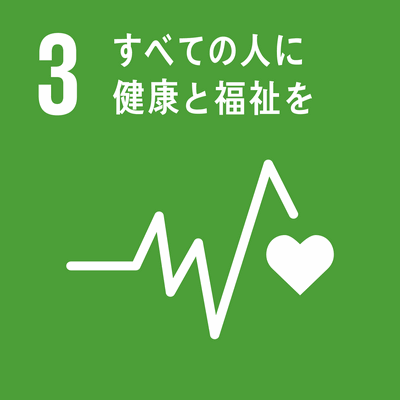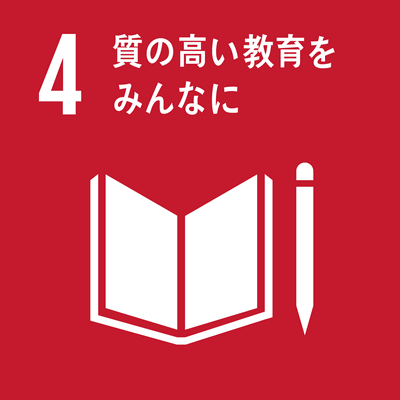シラバス表示
シラバスの詳細な内容を表示します。
→ 閉じる(シラバスの一覧にもどる)
科目の基本情報
| 開講年度 | 2023 年度 | |
|---|---|---|
| 開講区分 | 工学研究科(博士前期課程)分子素材工学専攻/応用化学専攻 | |
| 領域 | 主領域 : D | |
| 受講対象学生 |
大学院(修士課程・博士前期課程・専門職学位課程) : 1年次, 2年次 |
|
| 選択・必修 | ||
| 授業科目名 | 生体材料化学特論 | |
| せいたいざいりょうかがくとくろん | ||
| Chemistry for Biomaterials | ||
| 単位数 | 2 単位 | |
| ナンバリングコード | EN-ORBI-5
|
|
| 開放科目 | 非開放科目 | |
| 開講学期 |
前期 |
|
| 開講時間 |
火曜日 1, 2時限 |
|
| 授業形態 |
対面授業 * 状況により変更される可能性があるので定期的に確認して下さい
「オンライン授業」・・・オンライン会議ツール等を利用して実施する同時双方向型の授業 |
|
| 開講場所 | ||
| 担当教員 | 宮本 啓一 | |
| Miyamoto, Keiichi | ||
| SDGsの目標 |
|
|
| 連絡事項 | * 状況により変更される可能性があるので定期的に確認して下さい |
|
学修の目的と方法
| 授業の概要 | 生体組織と生体材料の相互作用を、生体側の反応(血栓、補体活性、アレルギー、炎症、石灰化、創傷治癒など)と材料側の反応(加水分解、酸化劣化、腐食など)に分けて学ぶ。この相互作用を踏まえたうえで開発された、生体適合性材料による人工臓器の例を紹介し、その課題点を追求し、解決策を議論する。更には次世代人工臓器としての生体組織再生材料の設計指針を理解する。 (Course description/outline) Interaction between living tissue and biomaterials is divided into reactions on the living body side (thrombus, complement activity, allergy, inflammation, calcification, wound healing, etc.) and reactions on the material side. We will introduce examples of artificial organs made of biocompatible materials based on this interaction, pursue their problems, and discuss solutions. In addition, understand the design guidelines for living tissue regeneration materials as next-generation artificial organs |
|---|---|
| 学修の目的 | 医用材料の開発に必要な基礎知識および課題点に関する知識を得る。 (Learning objective) Acquire basic knowledge and knowledge on issues required for the development of medical materials. |
| 学修の到達目標 | 人工臓器および組織工学に関する材料の基礎的知識を得る。 (Achievements) Obtain basic knowledge of materials related to artificial organs and tissue engineering. |
| ディプロマ・ポリシー |
|
| 成績評価方法と基準 | 発表、レポート |
| 授業の方法 | 講義 演習 |
| 授業の特徴 |
プレゼンテーション/ディベートを取り入れた授業 教員と学生のやり取りは日本語でも、英語による論文や教材の講読を含んだ授業 |
| 授業改善の工夫 | 授業アンケートの結果をもとに改善 |
| 教科書 | 特になし |
| 参考書 | 「医用材料工学」(堀内孝、村林俊 共著:コロナ社 2006) 「増補改訂 人工臓器は、いま」(日本人工臓器学会編:はる書房 2003) 「人工臓器イラストレイテッド」(日本人工臓器学会編:はる書房 2007) |
| オフィスアワー | 火曜日12:00-13:00 |
| 受講要件 | |
| 予め履修が望ましい科目 | 生体材料化学、生物化学A、B |
| 発展科目 | |
| その他 |
英語対応授業である。 |
授業計画
| MoodleのコースURL |
|---|
| キーワード | 生体材料化学、医用材料、再生医療 |
|---|---|
| Key Word(s) | Biomaterial, Artificial Organs, Regenerative Medicine |
| 学修内容 | 1)人工臓器(総論) 2)再生医療(総論) 3)生体材料の種類と特徴 4)生体組織と生体材料の相互作用 5)循環器系人工臓器(人工心臓) 6)循環器系人工臓器(人工血管) 7)代謝系人工臓器(人工腎臓) 8)代謝系人工臓器(人工肝臓) 9)感覚器系人工臓器(眼内レンズ) 10)構造系人工臓器(人工関節) 11)構造系人工臓器(人工皮膚) 12)再生医療(幹細胞) 13)再生医療(増殖因子) 14)再生医療(生体材料) 15)まとめ (Course contents) 1) Artificial organs (general) 2) Regenerative medicine (general) 3) Types and characteristics of biomaterials 4) Interaction between biological tissue and biological material 5) Cardiovascular artificial organ (artificial heart) 6) Cardiovascular artificial organs (artificial blood vessels) 7) Metabolic artificial organ (artificial kidney) 8) Metabolic artificial organ (artificial liver) 9) Artificial organs for sensory organs (intraocular lens) 10) Structural artificial organs (artificial joints) 11) Structural artificial organ (artificial skin) 12) Regenerative medicine (stem cells) 13) Regenerative medicine (growth factor) 14) Regenerative medicine (biomaterial) 15) Summary |
| 事前・事後学修の内容 | |
| 事前学修の時間:120分/回 事後学修の時間:120分/回 |

